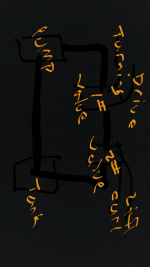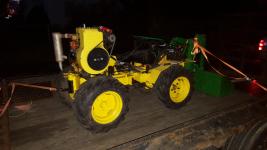farm boy00
Veteran Member
- Joined
- Jul 17, 2014
- Messages
- 1,297
- Location
- Howard City, MI
- Tractor
- John Deere M&MT, Case 1030 comfort king, Sears ST16, Craftsmen 6000, homemade articulation mini-loader
So I bought mini trencher that was striped to frame and turned into a mini loader. But I'll wondering what type of hydraulic system it runs
This is how it goes - pump to 1# 2 spool valve but then the outlet side feeds to 2# 2 spool valve. Then the outlet from the 2# goes to the tank


Next question. The pump is spinning backwards. Will that hurt it?? Seems to be fine.
Please no harsh/mean insults about the guy who built it. He's really smart when he designed this and built it and everything is great on the tractor so far except a leak by the pump and me breaking 2 welds from doing beyond what the tractor was made for abs digging up a sewage line in Clay ground
This is how it goes - pump to 1# 2 spool valve but then the outlet side feeds to 2# 2 spool valve. Then the outlet from the 2# goes to the tank


Next question. The pump is spinning backwards. Will that hurt it?? Seems to be fine.
Please no harsh/mean insults about the guy who built it. He's really smart when he designed this and built it and everything is great on the tractor so far except a leak by the pump and me breaking 2 welds from doing beyond what the tractor was made for abs digging up a sewage line in Clay ground

